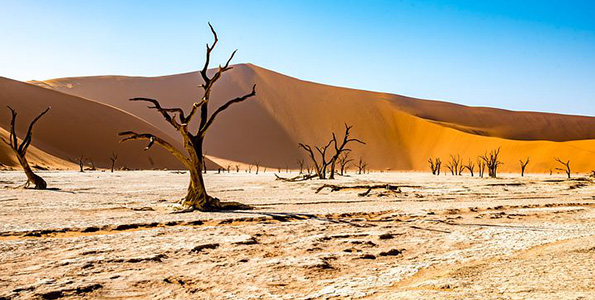Desert biomes are the driest of all the biomes. In fact, the most important characteristic of a desert is that it receives very little rainfall. Most deserts receive less than 300 mm a year compared to rainforests, which receive over 2,000 mm. That means that the desert only gets 10 percent of the rain that a rainforest gets!





